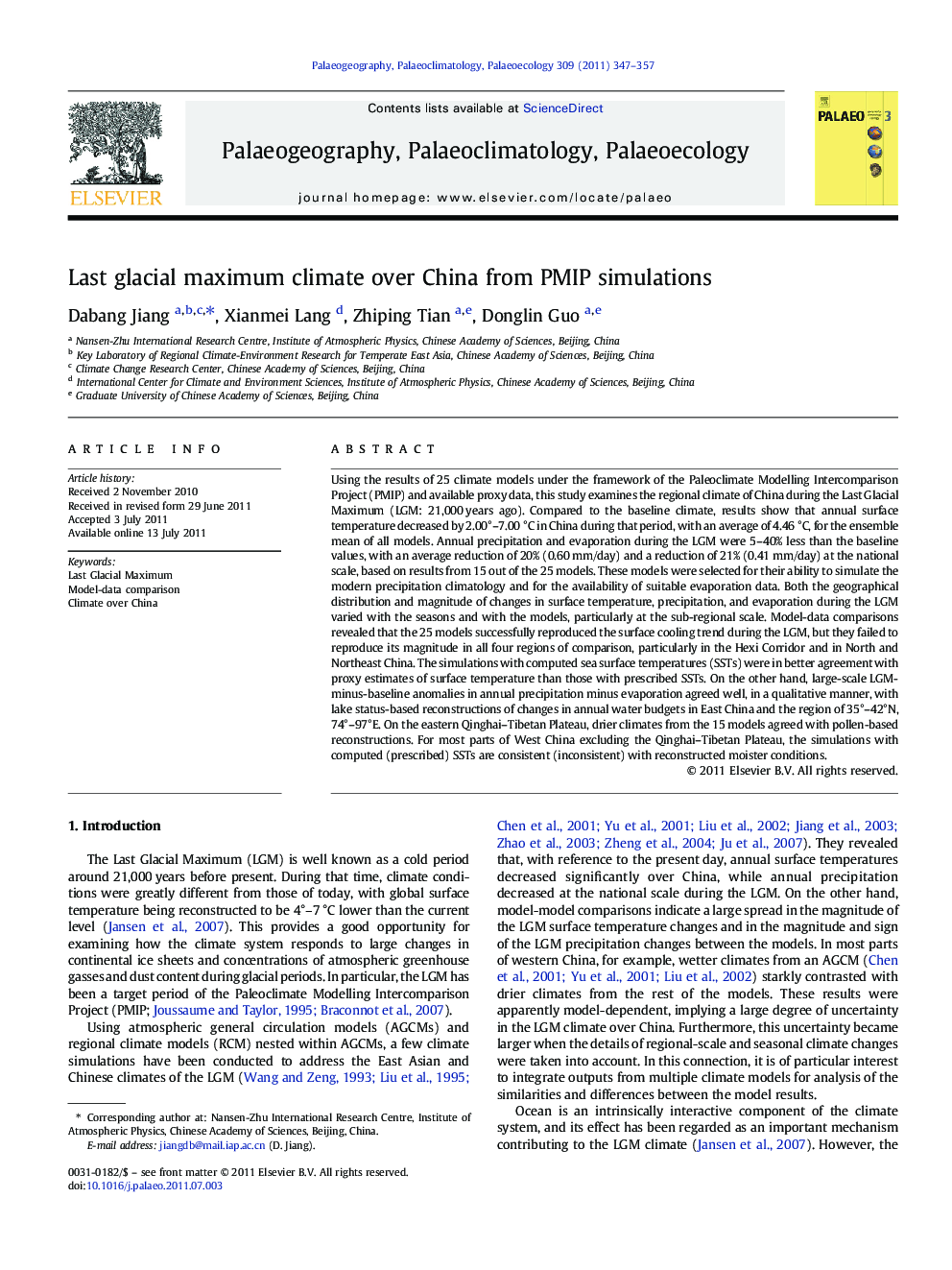| Article ID | Journal | Published Year | Pages | File Type |
|---|---|---|---|---|
| 4467261 | Palaeogeography, Palaeoclimatology, Palaeoecology | 2011 | 11 Pages |
Using the results of 25 climate models under the framework of the Paleoclimate Modelling Intercomparison Project (PMIP) and available proxy data, this study examines the regional climate of China during the Last Glacial Maximum (LGM: 21,000 years ago). Compared to the baseline climate, results show that annual surface temperature decreased by 2.00°–7.00 °C in China during that period, with an average of 4.46 °C, for the ensemble mean of all models. Annual precipitation and evaporation during the LGM were 5–40% less than the baseline values, with an average reduction of 20% (0.60 mm/day) and a reduction of 21% (0.41 mm/day) at the national scale, based on results from 15 out of the 25 models. These models were selected for their ability to simulate the modern precipitation climatology and for the availability of suitable evaporation data. Both the geographical distribution and magnitude of changes in surface temperature, precipitation, and evaporation during the LGM varied with the seasons and with the models, particularly at the sub-regional scale. Model-data comparisons revealed that the 25 models successfully reproduced the surface cooling trend during the LGM, but they failed to reproduce its magnitude in all four regions of comparison, particularly in the Hexi Corridor and in North and Northeast China. The simulations with computed sea surface temperatures (SSTs) were in better agreement with proxy estimates of surface temperature than those with prescribed SSTs. On the other hand, large-scale LGM-minus-baseline anomalies in annual precipitation minus evaporation agreed well, in a qualitative manner, with lake status-based reconstructions of changes in annual water budgets in East China and the region of 35°–42°N, 74°–97°E. On the eastern Qinghai–Tibetan Plateau, drier climates from the 15 models agreed with pollen-based reconstructions. For most parts of West China excluding the Qinghai–Tibetan Plateau, the simulations with computed (prescribed) SSTs are consistent (inconsistent) with reconstructed moister conditions.
► We examined the LGM climate over China using the results of 25 climate models. ► It was colder and drier than the baseline period. ► The models failed to reproduce the LGM cooling magnitude over China. ► Simulations with computed SSTs agreed better with proxy data than the others.
